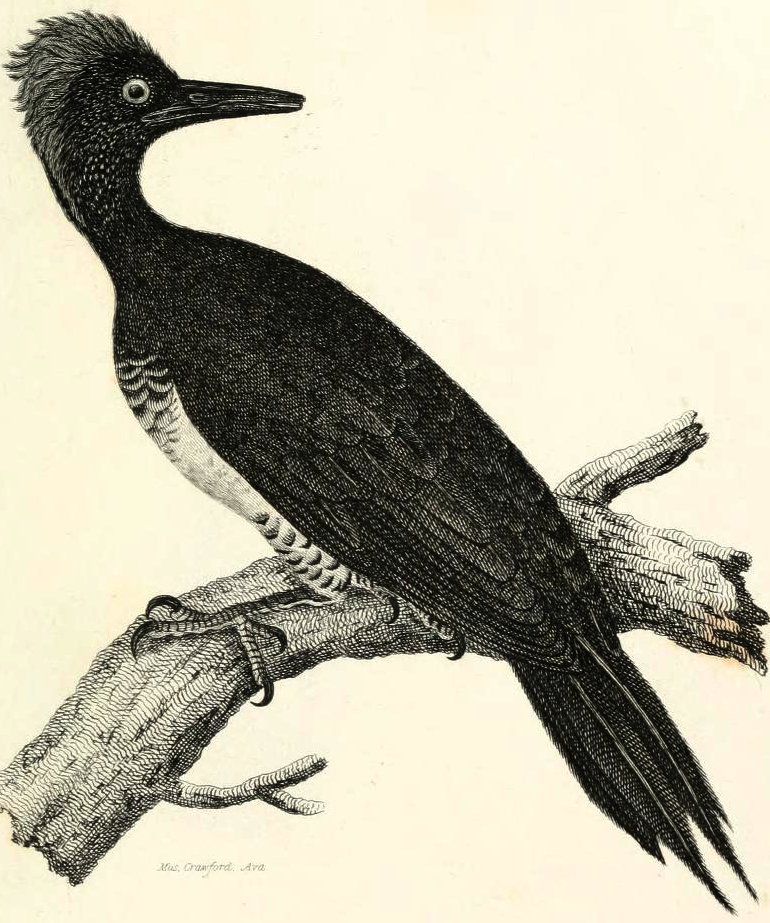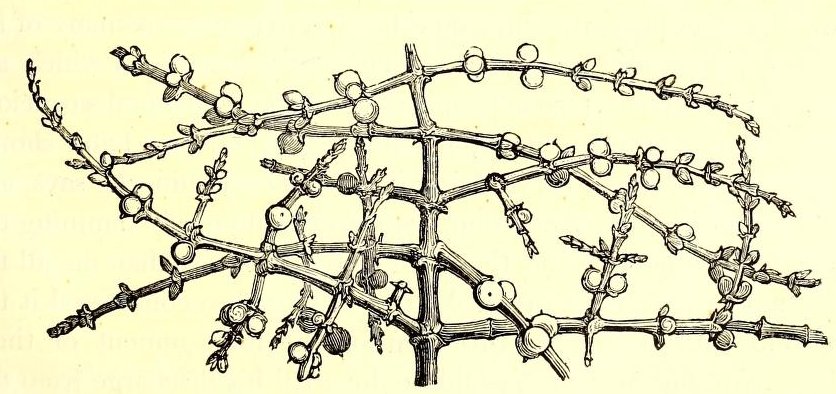A draft of the introduction to Origin of species?
by John van Wyhe
The significance of the document in CUL-DAR64.2.28v came to light as part of Christine Chua's historic work transcribing Darwin manuscripts. It is a fair copy of a Darwin draft in the hand of his main copyist Ebenezer Norman with corrections by Darwin. The entire page has been cancelled with a vertical line, meaning Darwin had done with it. The reverse side of the paper was later used in the 1870s for calculations on the amount of soil pushed up by worms in a square yard and it is amongst these papers that the fair copy is now preserved in Cambridge University Library. Chua transcribed all of Darwin's earthworms notes in CUL-DAR63-65.

The text of the draft does not match any publication by Darwin. However, the content shows it was either:
1.
part of the lost preface of his unpublished 'big book' Natural selection; the first two chapters were used in writing Variation. (one folio is known to survive: CUL-DAR47.95), or:
2. it was part of an early draft of the introduction to Origin of species.
The points made about the woodpecker and mistletoe in the manuscript correspond closely to page 3 of the introduction of Origin. Before looking at the start of Origin, it's worth remembering that Darwin mentioned the woodpecker and mistletoe in a similar way as early as his pencil sketch of his theory in 1842. There he asks, could varieties be produced that were coadapted (not using this term) to other species?
"Can varieties like some vars of domesticated animals, like almost all wild species be produced adapted by exquisite means to prey on one animal or to escape from another,—or rather, as it puts out of question effects of intelligence and habits, can a plant become adapted to animals, as a plant which cannot be impregnated without agency of insect; or hooked seeds depending on animal's existence: woolly animals cannot have any direct effect on seeds of plant. This point which all theories about climate adapting woodpecker to crawl up trees,...miseltoe" Foundations, pp. 5-6.
And later in the same document the woodpecker is again mentioned as nullifying the idea of habit, chance or external conditions coadapting a species like the woodpecker, p. 10: "Introduce here contrast with Lamarck,—absurdity of habit, or chance ?? or external conditions, making a woodpecker adapted to tree".
The woodpecker is not used in the same way in the much longer 1844 species essay (which lacks an introduction and starts with chapter 1) but on p. 86 mistletoe is mentioned, making a point about selection. The 1844 essay was copied by the local school teacher Joseph Fletcher. (See a guide to handwriting in the Darwin papers.)
R. C. Stauffer speculated that the first 15 folios of the Natural selection manuscript (now all lost) were the preface. (Natural selection, p. 22) Darwin quoted from this preface in an 18 January 1860 letter to Baden Powell who had written pointing out his own earlier work on evolution:
"I have just bethought me of a Preface which I wrote to my larger work, before I broke down & was persuaded to write the now published Abstract [i.e. Origin]. In this Preface I find following passage, which on my honour I had as completely forgotten as if I had never written it. 'The 'Philosophy of Creation' has lately been treated in an admirable manner by the Revd. Baden Powell in his Essay &c &c 1855. Nothing can be more striking than the manner in which he shows that the introduction of new species is 'a regular not a casual phenomenon'" (Correspondence vol. 8)
This preface was later used to write the Preface to the 4th American printing (issued in May 1860, see also letter to Asa Gray, 1 February [1860], and appearing in the German 3d ed. as Vorrede des Verfassers) and then expanded into the Historical sketch in the 3d and subsequent editions of Origin because the quoted text is repeated there.1 Indeed, the reason Darwin was familiar with it at the time of writing to Baden Powell was probably that he returned to the old sheets at the start of the Natural selection manuscript to prepare the American Preface for Origin.
Amazingly, the only known draft sheet of the Historical sketch has only recently (2022) been recognised and published in Darwin Online. It is in CUL-DAR64.2.13v. That too was re-used during the earthworms research where it remains, only a few pages away from this one.
There are additional reasons to think that the manuscript in question was for Origin and not Natural selection. We do not know that the Preface to Natural selection was ever sent to be copied, this was done at a late stage of composition or to share text with someone else for comment, such as J. D. Hooker. (See for example CUL-DAR15.1.B1-B39 and CUL-DAR45.18-19.) And the descendant text of the Historical sketch only mentions the woodpecker in one line in answer to the theory of evolution in Vestiges. But further details could have been omitted since by then discussed in the introduction to Origin. Even more tellingly, the manuscript for Natural selection was preserved by Darwin and the sheets were not relegated to scrap paper as was the case with this manuscript and other Origin drafts and drafts of other works.

A woodpecker from Cuvier 1827-35 vol. 7, one of the books in the Beagle library.

The Cape Misseltoe from Burchell 1822-24, also in the Beagle library.
The woodpecker and mistletoe come up again in a letter and the sketch of the theory for Asa Gray written in 1857. In the 5 September letter itself Darwin wrote: "The facts which kept me longest scientifically orthodox are those of adaptation—the pollen-masses in asclepias—the mistletoe, with its pollen carried by insects, and seed by birds—the woodpecker, with its feet and tail, beak and tongue, to climb the tree and secure insects. To talk of climate or Lamarckian habit producing such adaptations to other organic beings is futile. This difficulty I believe I have surmounted." And in the sketch, which Darwin wrote out roughly and then had copied by Norman, we read:
"I cannot doubt that during millions of generations individuals of a species will be occasionally born with some slight variation, profitable to some part of their economy. Such individuals will have a better chance of surviving … An organic being, like the woodpecker or misseltoe, may thus come to be adapted to a score of contingences—natural selection accumulating those slight variations in all parts of its structure, which are in any way useful to it during any part of its life." (GHL-HU-gra00078-48)
This was part of the joint presentation with A. R. Wallace's essay in 1858 and appears on p. 52 of the famous Linnean paper.
The manuscript in question has no running header, unlike most fair copies. The rare surviving rough draft of folio 40 of Chapter 1 of the Origin does not have a running header either- nor does the fair copy folio 48 of Chapter 13, whereas the only other known surviving fair copy leaf, Chap. VII folio 23, does have one.
Here is the text of the introduction of Origin which the manuscript in question fits so closely in content:
"Naturalists continually refer to external conditions, such as climate, food, &c., as the only possible cause of variation. In one very limited sense, as we shall hereafter see, this may be true; but it is preposterous to attribute to mere external conditions, the structure, for instance, of the woodpecker, with its feet, tail, beak, and tongue, so admirably adapted to catch insects under the bark of trees. In the case of the misseltoe, which draws its nourishment from certain trees, which has seeds that must be transported by certain birds, and which has flowers with separate sexes absolutely requiring the agency of certain insects to bring pollen from one flower to the other, it is equally preposterous to account for the structure of this parasite, with its relations to several distinct organic beings, by the effects of external conditions, or of habit, or of the volition of the plant itself.
The author of the 'Vestiges of Creation' would, I presume, say that, after a certain unknown number of generations, some bird had given birth to a woodpecker, and some plant to the misseltoe, and that these had been produced perfect as we now see them; but this assumption seems to me to be no explanation, for it leaves the case of the coadaptations of organic beings to each other and to their physical conditions of life, untouched and unexplained." Origin, pp. 3-4.
These were favourite examples for Darwin and he cited them again on p. 60: "We see these beautiful co-adaptations most plainly in the woodpecker and missletoe" and p. 184: "Can a more striking instance of adaptation be given than that of a woodpecker for climbing trees and for seizing insects in the chinks of the bark?"
If this fair copy was prepared during the writing of Origin, then this means that at some point Darwin completely rewrote his introduction. See the text in CUL-DAR64.2.28v here.
One might speculate that the first paragraph of the introduction to Origin could have been prepared for or been similar to one for Natural selection: "When on board H.M.S. 'Beagle'...", but the next three paragraphs, "My work is now nearly finished...[Hooker's] excellent judgment" detail matters specific to the time Origin was written. But the next sentence could have been the first line of an introduction on its own: "In considering the Origin of Species..." and it is on this third page that the woodpecker and mistletoe are discussed.
Therefore, since the manuscript in question which discusses this was folio 10- what could have filled the 9 folios before it? Possibly it was a historical discussion. Perhaps it was removed to keep the introduction concise.
Although the manuscript in question looks to be part of an earlier, rewritten, introduction to Origin, it could nevertheless be part of the lost Preface to Natural selection or maybe some other document. Perhaps further evidence will come to light to help clarify these questions.
RN1
1 On the history of the Historical sketch see Johnson 2007.





